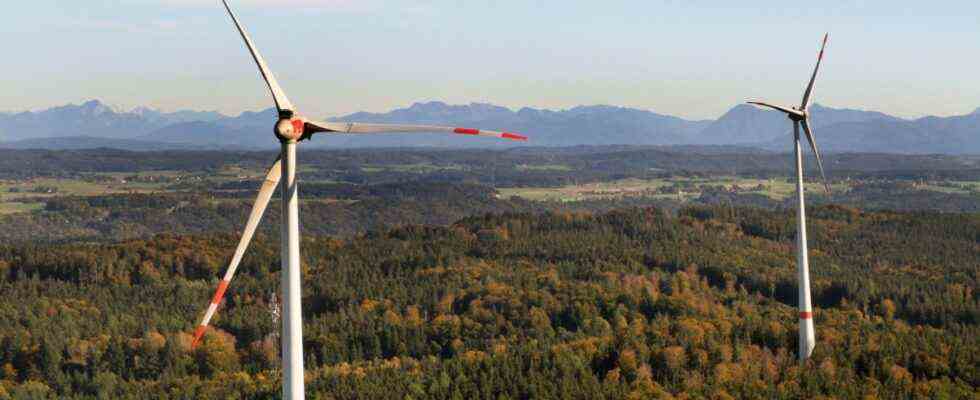The district of Munich is speeding up the energy transition: on Monday afternoon, the technical committee for agricultural and environmental issues decided with a large majority to clear the way for the construction of wind turbines in the district’s landscape protection areas. For this purpose, so-called zoning concepts must first be drawn up by the district office, which apply to certain locations, for example in Forstenrieder Park and Fürstenrieder Wald or in Hofoldinger and Höhenkirchner Forst. District Administrator Christoph Göbel (CSU) explained that these concepts are the basic requirement for wind turbines to be set up in these areas at all.
When the ordinances for the two large protected areas were issued in 1970, the use of wind energy was not yet an issue. According to a decree by the Bavarian state government in 2016, this form of energy can now be used at locations that are compatible with nature, the landscape and the population. However, certain parts of the areas would have to be kept free (exclusion areas), and the areas concerned should not lose their protective effect for endangered species as a result of the wind turbines. The working groups (Arge) formed specifically for this topic would continue to deal with the question of the extent to which wind farms can actually be built, what height and capacity the wind turbines should have and where such systems are reasonable for people and nature.
The FDP demands an expert opinion before intervening in the regulations for landscape protection areas
The fact that the debate on the subject was emotional and sometimes even heated was due to an application by the FDP group in the district council: According to this, an expert report should first be commissioned before a decision is made on wind use in the district and a change in regulations on the landscape protection areas to compare the costs and benefits of the different forms of energy and to present the advantages and disadvantages, especially from the cost aspect of avoiding CO₂. FDP district councilor Manfred Riederle, who took part virtually in the meeting, questioned the sense of generating wind energy in the district: The wind speed in this country is not sufficient, while a wind farm in the North Sea with nine wheels and a wind speed of 16 meters per second produces 27 megawatts performance, a similarly large wind farm would only have an output of three megawatts at eight meters per second.
“And with us, the average wind speed is not even eight, but only five to six meters per second,” said Riederle. He suggested relying more on geothermal energy than on wind energy and called the strategy of the district administration “out of touch with reality”https://www.sueddeutsche.de/muenchen/landkreismuenchen/.”We don’t want to prevent wind power, but with this form of energy our needs can never be met,” he said, describing the use of politicians for wind turbines as “voodoo and symbolic politics”.
“Regardless of whether we want to open the landscape protection areas for wind turbines or not, we have to!”
The Liberal was alone in the committee with his assessment, district councilors from all other parties passionately contradicted him: Brunnthal’s Mayor Stefan Kern (CSU) emphasized that every opportunity must be used to increase the proportion of renewable energies: “We don’t have the time more,” he said, citing climate change as well as the Ukraine conflict and dependence on Russian natural gas: “It doesn’t matter whether we want to open the landscape protection areas for wind turbines or not, we have to!”
The Green Oliver Seth made a similar statement, citing those in Berg in the Starnberg district as an example of profitable wind turbines that were “20 percent above the calculation”, which is also related to the fact that the technology has developed significantly in recent years. Geothermal energy is not an alternative when it comes to power generation, and the heat and electricity sectors should not be lumped together. In any case, there is a need to hurry: “If we don’t act, we’ll have lost two years again,” says Seth.
And SPD district councilor Natascha Kohnen called for determination and explained that wind power is urgently needed, which is why the 10-hour rule in Bavaria is counterproductive: “We only build four to ten wind turbines a year in Bavaria, according to current reports that wind power is very profitable here.” You have to help the working groups with their work, Kohnen continued.
Ultimately, apart from FDP man Riederle, all committee members voted for the zoning. In the next step, the concepts could then become more concrete. For the Hofoldinger forest, there is already a proposal from the consortium there, in which areas wind turbines would be conceivable. Such a plan does not yet exist for the Forstenrieder Park, including Forst Kasten and Fürstenrieder Wald, nor does any preparatory expert work.

